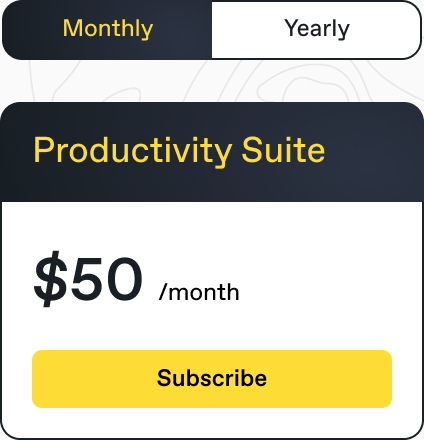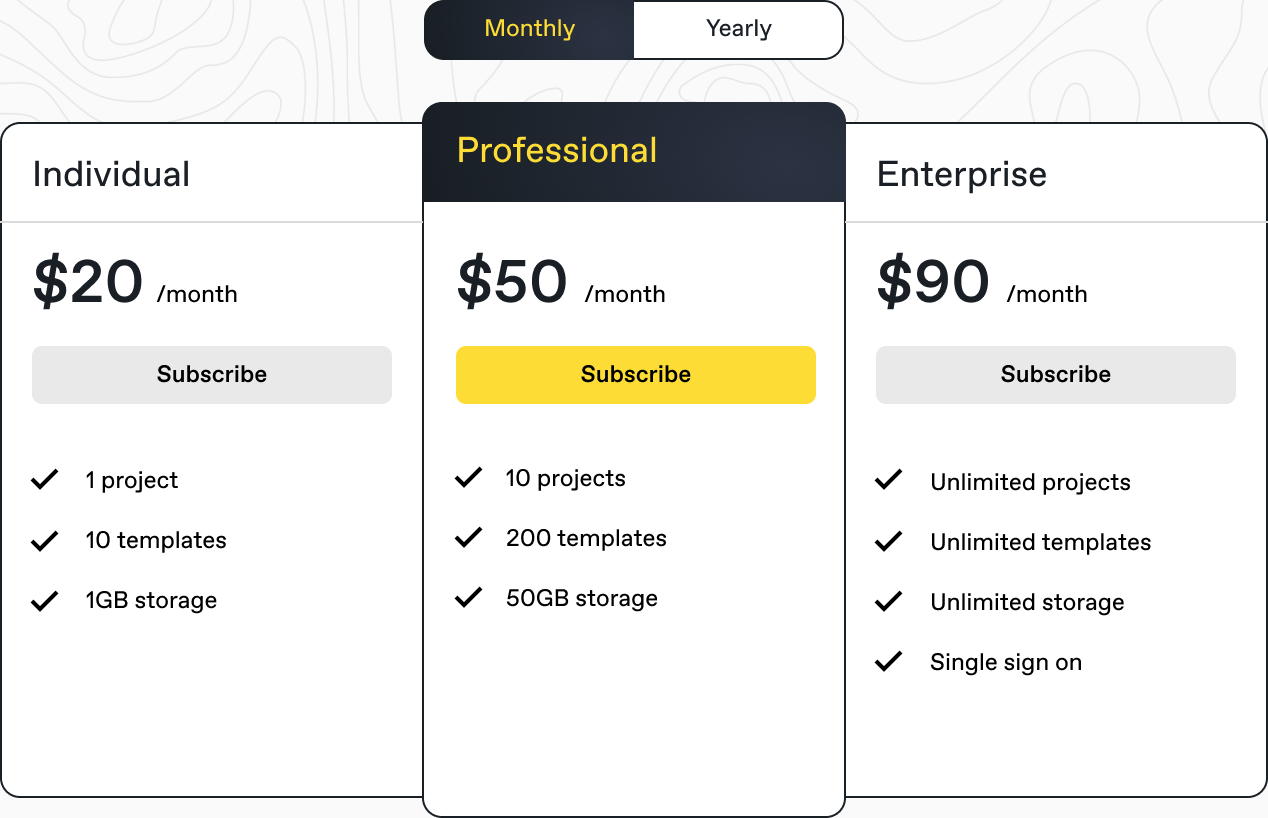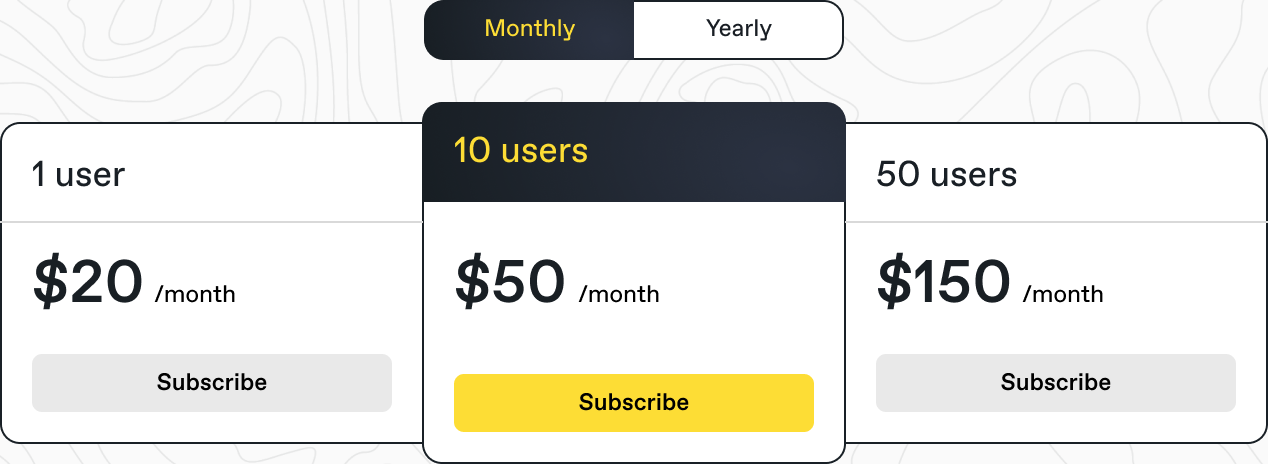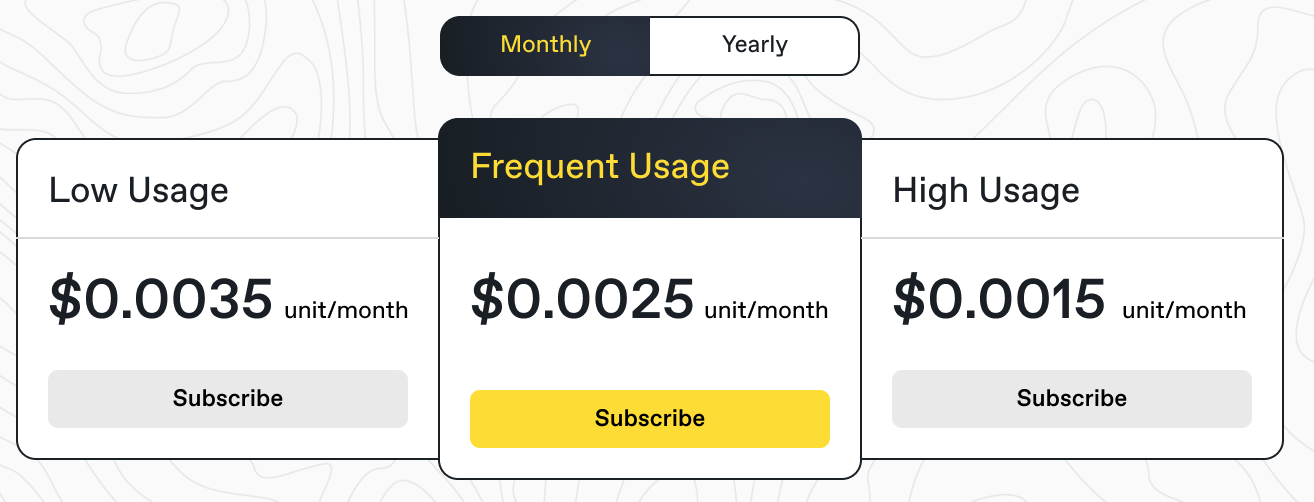Supported subscription models
Introduction
One size does not fit all when it comes to subscriptions. Paddle’s flexible setup allows you to create subscription plans based on different subscription models, as summarised in the following sections:
Basic recurring subscriptions
The Basic recurring subscription model is ideal for selling products or services which don't vary, perhaps with pricing for different billing intervals. For example:

Implementation
To add this type of subscription plan in Paddle, simply create a subscription plan with the required pricing.
If you have different prices for different billing intervals, create one subscription plan for each billing interval.
Good-better-best subscriptions
The good-better-best subscription model is where products or services are sold in feature tiers, with escalating features and pricing for each tier. For example:

Implementation
To add this type of subscription plan in Paddle:
- Create one subscription plan for each feature tier. In each case, ensure that pricing reflects the total cost for all features associated with the plan.
- If you have different prices for different billing intervals, create one subscription plan for each feature tier/billing interval.
- Details of included features should be made clear on your web store page - individual features are not added to Paddle.
- When a customer purchases a new subscription, your backend system should allow the appropriate level of access to associated features based on information received from Paddle in the Subscription created webhook.
Within the Subscription created webhook payload, it's likely that the
subscription_plan_idwould be used to determine what feature access is enabled by your backend system. - If an existing subscription is updated, your backend system should adjust the appropriate level of access to associated features based on information received from Paddle in the Subscription updated webhook.
If a customer wishes to add/remove features, their existing subscription should be canceled, and a new plan should be purchased.
Per-seat subscriptions
The per-seat subscription model is where products or services are sold in user/license quantity tiers, with escalating pricing for each tier of user/license quantities. For example:

Implementation
To add this type of subscription plan in Paddle:
- Create one subscription plan for each user/license tier. In each case, ensure that pricing reflects the total cost for the number of users associated with the plan.
- If you have different prices for different billing intervals, create one subscription plan for each user/license tier/billing interval.
- Details of included users should be made clear on your web store page - user quantities are not specified in Paddle.
- When a customer purchases a new subscription, your backend system should allow the appropriate level of access based on information received from Paddle in the Subscription created webhook.
Within the Subscription created webhook payload, it's likely that the
subscription_plan_idwould be used to determine the number of seats to be enabled by your backend system. - If an existing subscription is updated, your backend system should adjust the appropriate level of access based on information received from Paddle in the Subscription updated webhook.
If a customer wishes to increase/decrease their number of seats, their existing subscription should be canceled and a new plan should be purchased.
Metered subscriptions
The metered subscription model is where products or services are billed in arrears according to usage, as calculated by your platform. For example:

Implementation
In Paddle, this model can be achieved by adding an amount to an existing subscription, or by making a one-time charge for the required amount. For further information see our Metered billing for subscriptions guide.